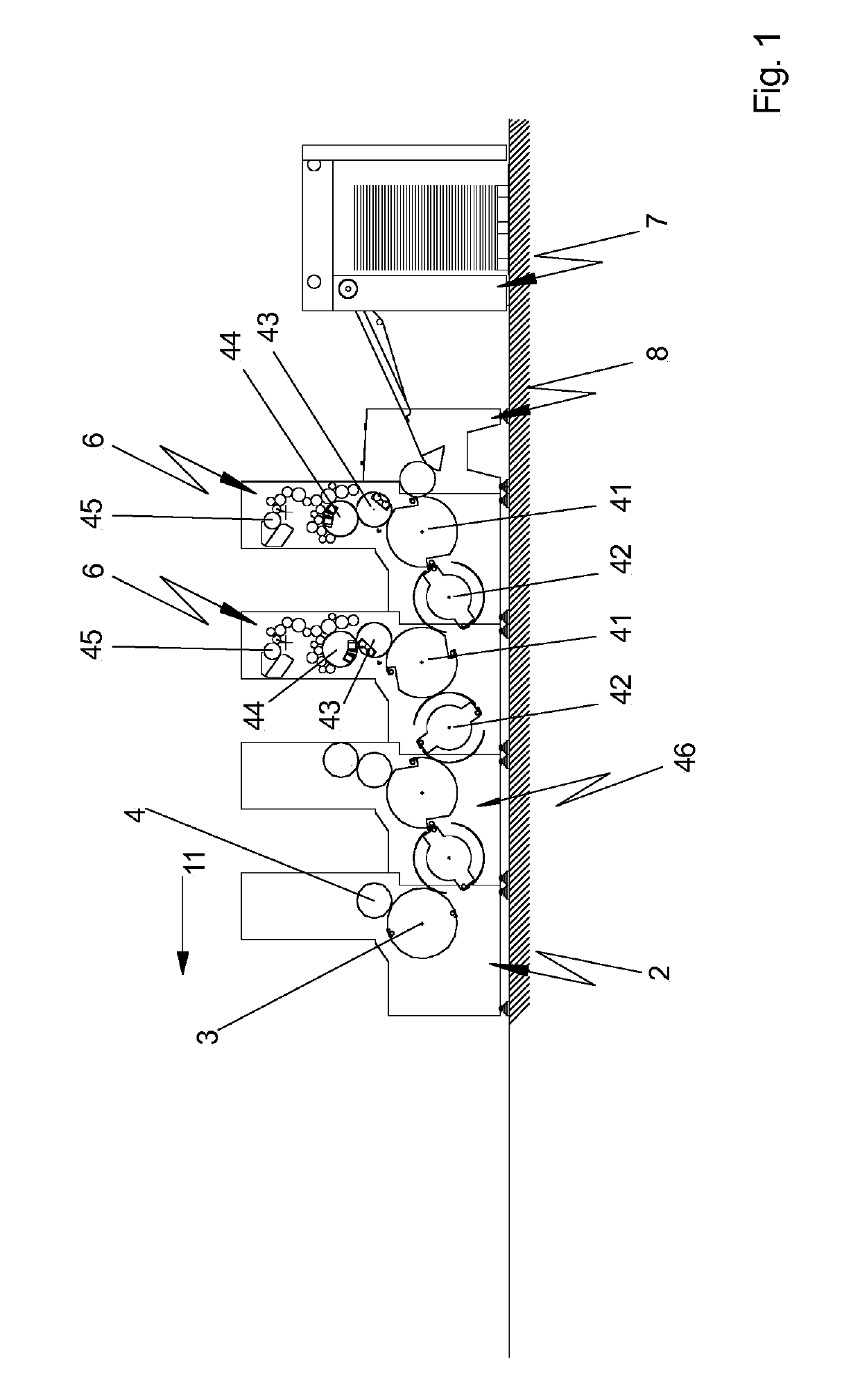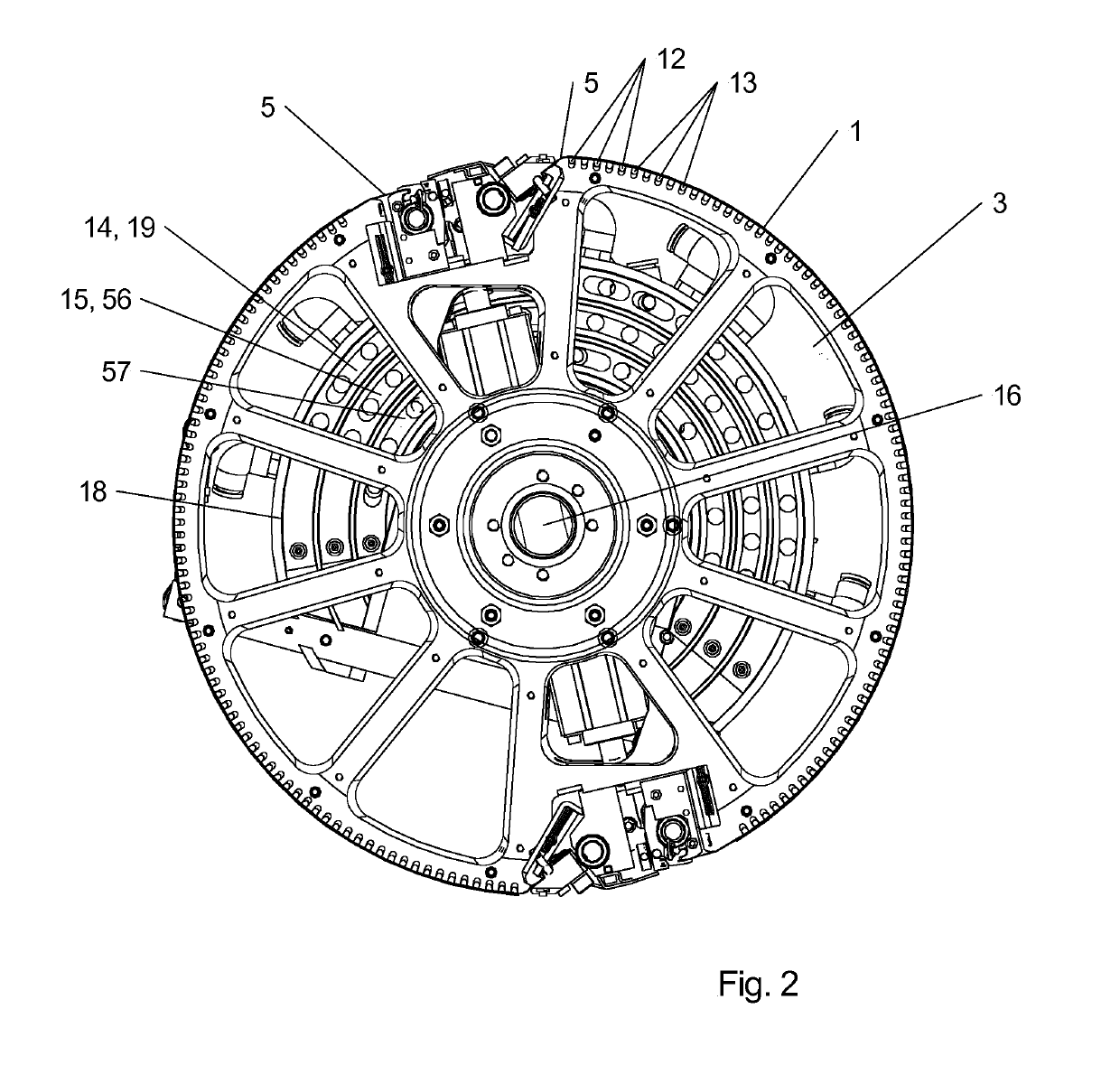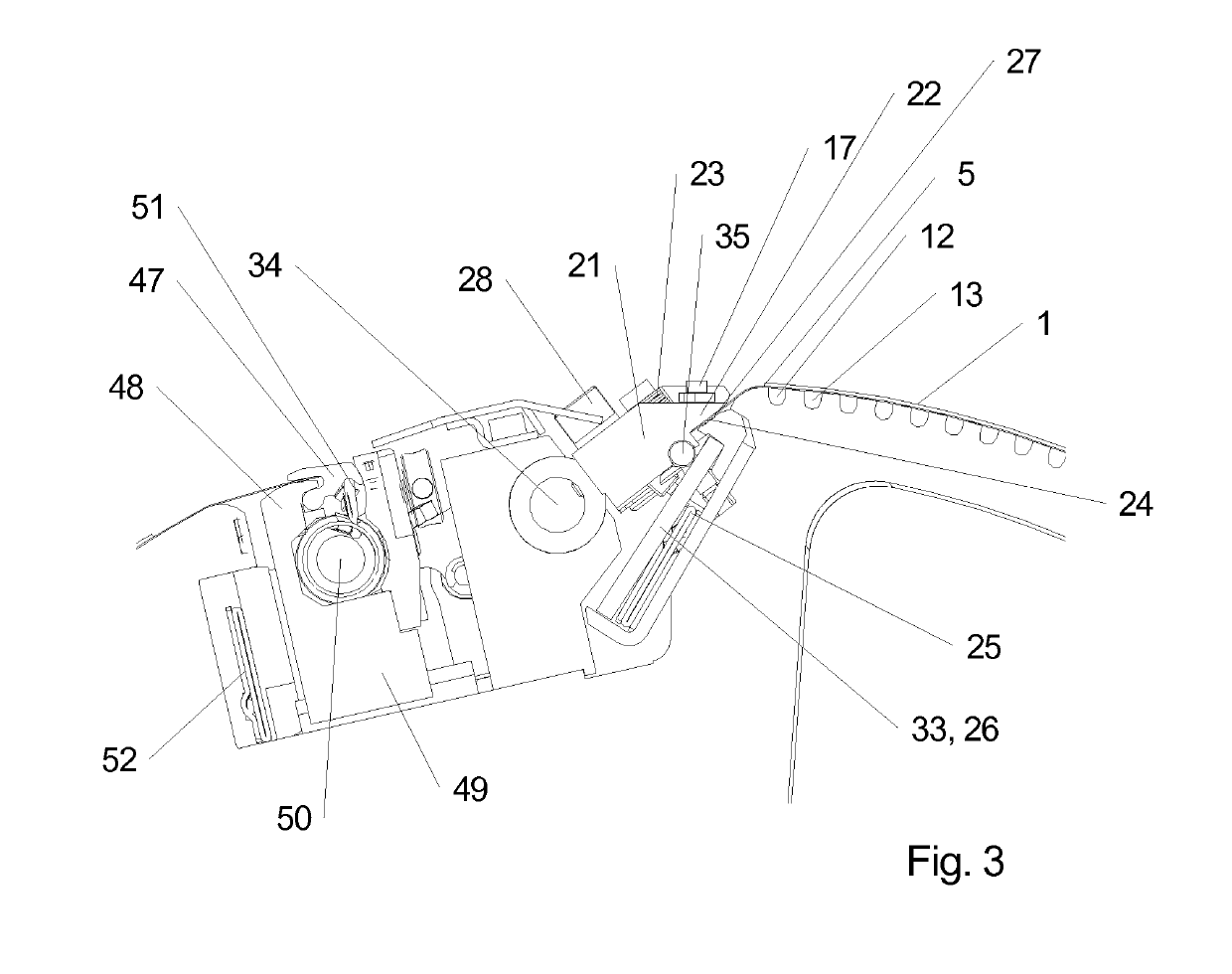Device for treating substrates
a technology for treating devices and substrates, applied in the direction of pile separation, paper/cardboard containers, containers, etc., can solve the problems of comparatively complex configuration and easy soiling of devices, and achieve the effect of reducing machine complexity, increasing the functional stability of the device for treating substrates, and effective and/or reliable separation of substrates
- Summary
- Abstract
- Description
- Claims
- Application Information
AI Technical Summary
Benefits of technology
Problems solved by technology
Method used
Image
Examples
Embodiment Construction
[0057]The device for treating substrates 1 having a separation system 2, with which processed substrate 1 can be separated into at least one waste part 9 and at least one blank 10, may be embodied as an independent machine, and in this case has a feed system for substrate 1, not described in greater detail here.
[0058]According to another embodiment, separation system 2 is part of a substrate processing machine, in particular a sheet processing machine, and is operated in-line with the units of the sheet processing machine. A sheet processing machine is understood, in particular, to be a sheet-fed printing machine, such as that illustrated, e.g. in FIG. 1. In the following, the invention will be described by way of example in reference to a sheet-fed printing machine, in particular an offset sheet-fed printing machine, although this description is also intended to apply similarly to other sheet processing machines as well as to an embodiment of the device as an autonomous machine.
[00...
PUM
| Property | Measurement | Unit |
|---|---|---|
| angle | aaaaa | aaaaa |
| length | aaaaa | aaaaa |
| length | aaaaa | aaaaa |
Abstract
Description
Claims
Application Information
 Login to View More
Login to View More - R&D
- Intellectual Property
- Life Sciences
- Materials
- Tech Scout
- Unparalleled Data Quality
- Higher Quality Content
- 60% Fewer Hallucinations
Browse by: Latest US Patents, China's latest patents, Technical Efficacy Thesaurus, Application Domain, Technology Topic, Popular Technical Reports.
© 2025 PatSnap. All rights reserved.Legal|Privacy policy|Modern Slavery Act Transparency Statement|Sitemap|About US| Contact US: help@patsnap.com



